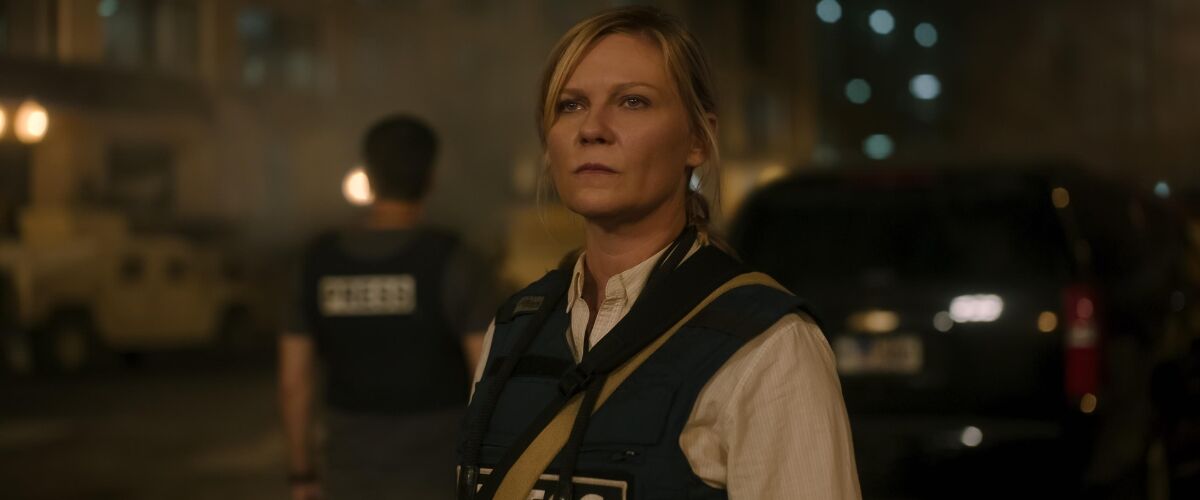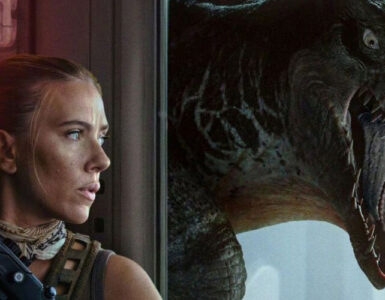With the large number of real-life armed conflicts raging across the globe, there is undoubtedly a level of disconnect with the general population, and it’s against this backdrop of violence that director’s Alex Garland’s latest cinematic venture, Civil War, dares to ask – what if the unthinkable happened in the world’s most powerful nation?
This isn’t dystopian science fiction as it’s a chillingly plausible exploration of where America’s simmering political tensions might lead, and also asking, will you care more?
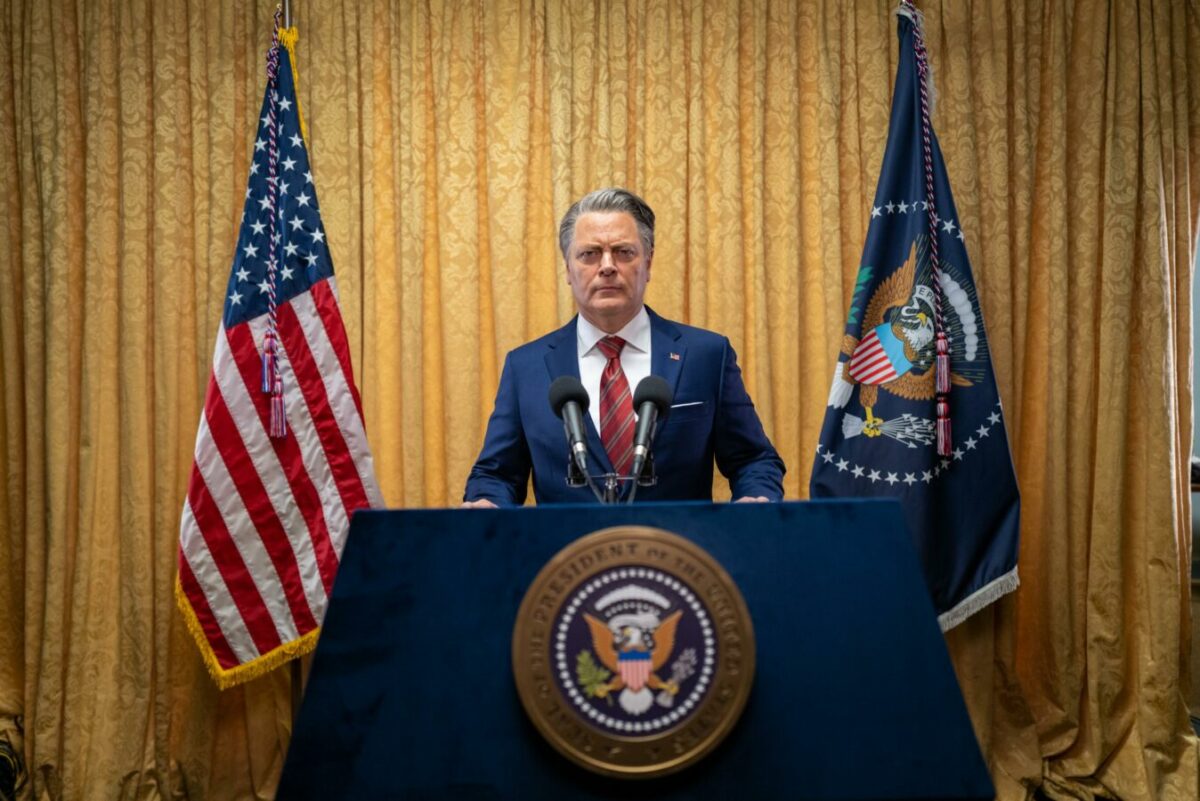
Not strictly adhering to the confines of science fiction or speculative fiction, the film plunges audiences headfirst into a future America ravaged by internal strife and divided loyalties, offering little in the way of exposition. Viewers learn snippets, including a whisper of ‘Western Forces’, an unlikely alliance between the states of Texas and California, and a third term of the American Presidency, but the reasons for the whole conflict remain frustratingly opaque, though it doesn’t matter because as we know of any conflict, various parties will invoke their rights but the result is a fight where there will never be winners. This strategic omission allows audiences to project their interpretations onto the film’s canvas, emphasising the narrative’s universal relevance over the particulars of its fictional conflict.
Garland, known for tackling narrative challenges head-on, from the unnerving exploration of AI in Ex Machina to the psychological terror in Men, continues this tradition with Civil War. The film’s conceptual daring, of a group of photojournalists, known to document events as it happens, is matched by Garland’s keen directorial eye, crafting a story that’s not only intense and emotionally charged, but also one that doesn’t flinch from portraying gut-wrenching violence.
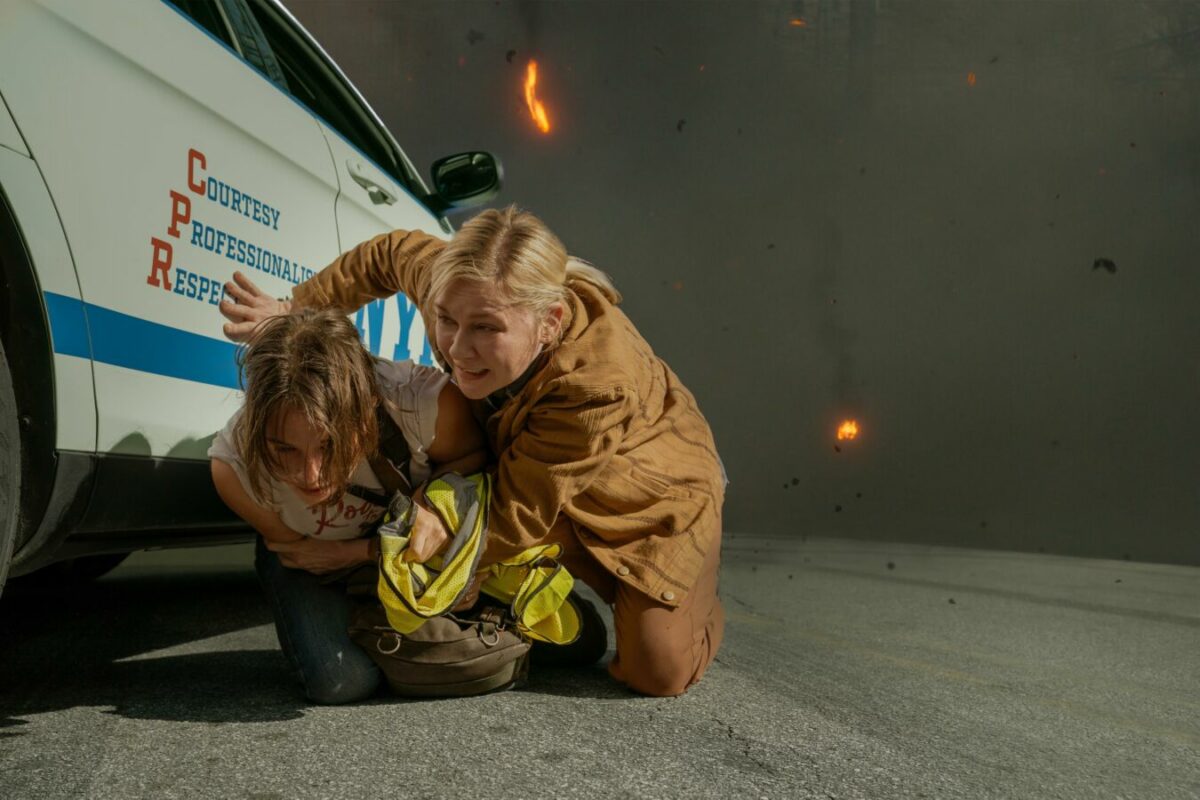
Shaky camerawork and jarringly loud gunfire thrust viewers directly into the chaos of battle, leaving a lasting impression of the horrors, as Garland distils the simmering tensions of a fractured America into a potent narrative, using this devastated landscape as the backdrop for meticulously orchestrated violence. Crashed helicopters litter desolate plains, and abandoned shopping malls stand as eerie monuments to a lost yet familiar Western society, and it’s a depiction that many will recognise, as each frame captures the chaos with an unsettling beauty, highlighting the stark contrast between a well-known nation in ruins, and the brutal acts unfolding within it.
Yet, the true essence of the film emerges as Garland invites us to view this spectacle through the eyes of its characters – journalists striving to capture reality through their lenses. This act mirrors the director’s own cinematic lens, creating a meta-commentary on image-making in a world desperate for truth. It elevates Civil War beyond mere world-building, inviting viewers to draw uneasy parallels between the film’s fictional America and the anxieties gnawing at our own reality.
Through this lens, Civil War eschews the typical for the innovative, ensuring it stands apart in Garland’s oeuvre as a poignant, distressing examination of conflict and the people caught in its crossfire. At the heart of the film lies a group of journalists, each representing a facet of the journalistic drive: the pursuit of the story, the adrenaline rush of danger, and the often-ignored cost of such endeavours.
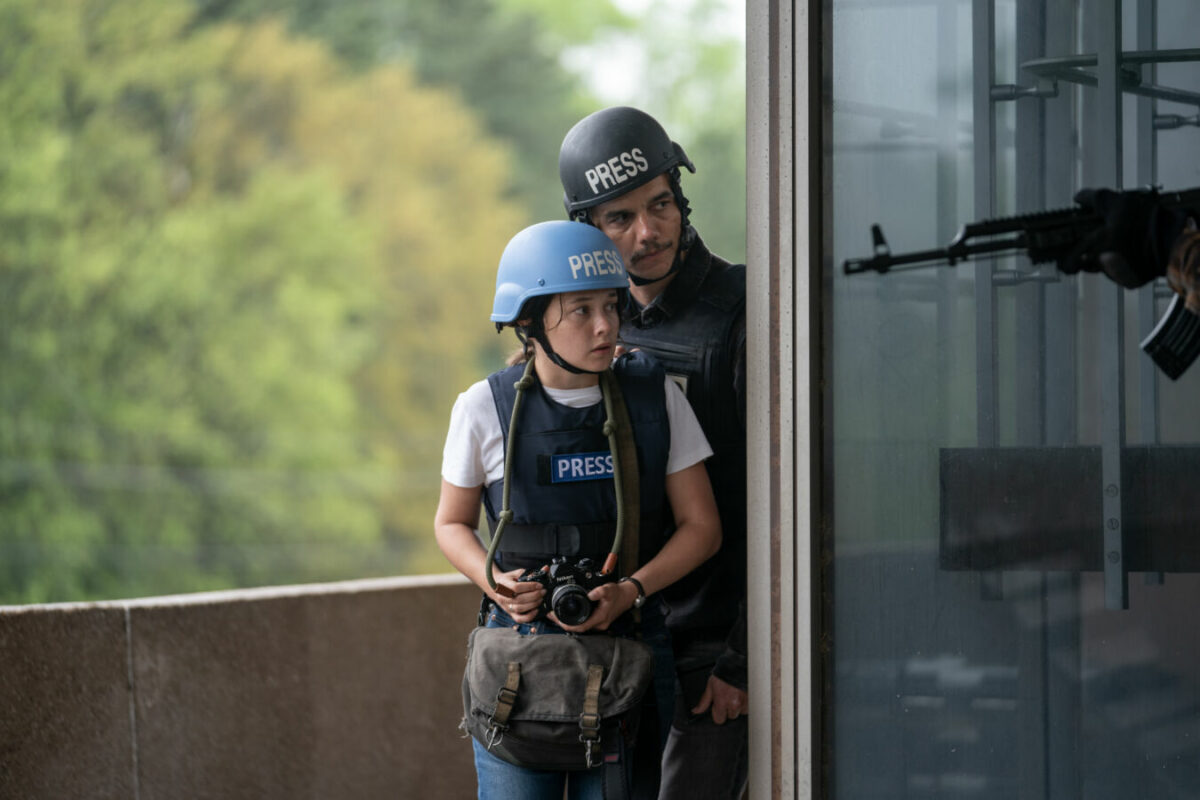
Led by Kirsten Dunst’s Lee, a photojournalist whose legend looms large over her every shot, and Wagner Moura’s Joel, the narrative dives into the ethos of war reporting. They are accompanied by Stephen McKinley Henderson’s seasoned The New York Times journalist, Sammy, and the naïve yet eager newcomer, Jessie, played by Cailee Spaeny. Together, the quartet embark on an 800-mile perilous road trip to the heart of America’s upheaval in Washington D.C., to possibly secure an interview with the President, whose tenure has sparked the nation’s descent into chaos.
Garland crafts scenes of stark contrast that pierce the veil of normalcy: a serene meadow, bathed in sunlight, abuts a grotesque mass grave, watched over by a sadistic soldier played by Jesse Plemons whose whimsical red sunglasses mock the gravity of his grim duties. The film’s audacious soundtrack, juxtaposing pop anthems against the backdrop of dystopian horror, underlines the absurdity of seeking levity in the depth of despair. Dark humour might surface, a sardonic laugh or two, but the film remains unflinchingly grim.
Amidst its dark vistas, Civil War grapples with the essence of journalism and the act of witnessing, the responsibility to document horrors without succumbing to numbness and of interfering with the unfolding of events. Dunst’s portrayal of seasoned, jaded photojournalist Lee is a masterclass in subtlety, her restrained performance capturing the dichotomy of cynicism and harsh truths bred from witnessing humanity at its worst and a small hope for a brighter dawn.
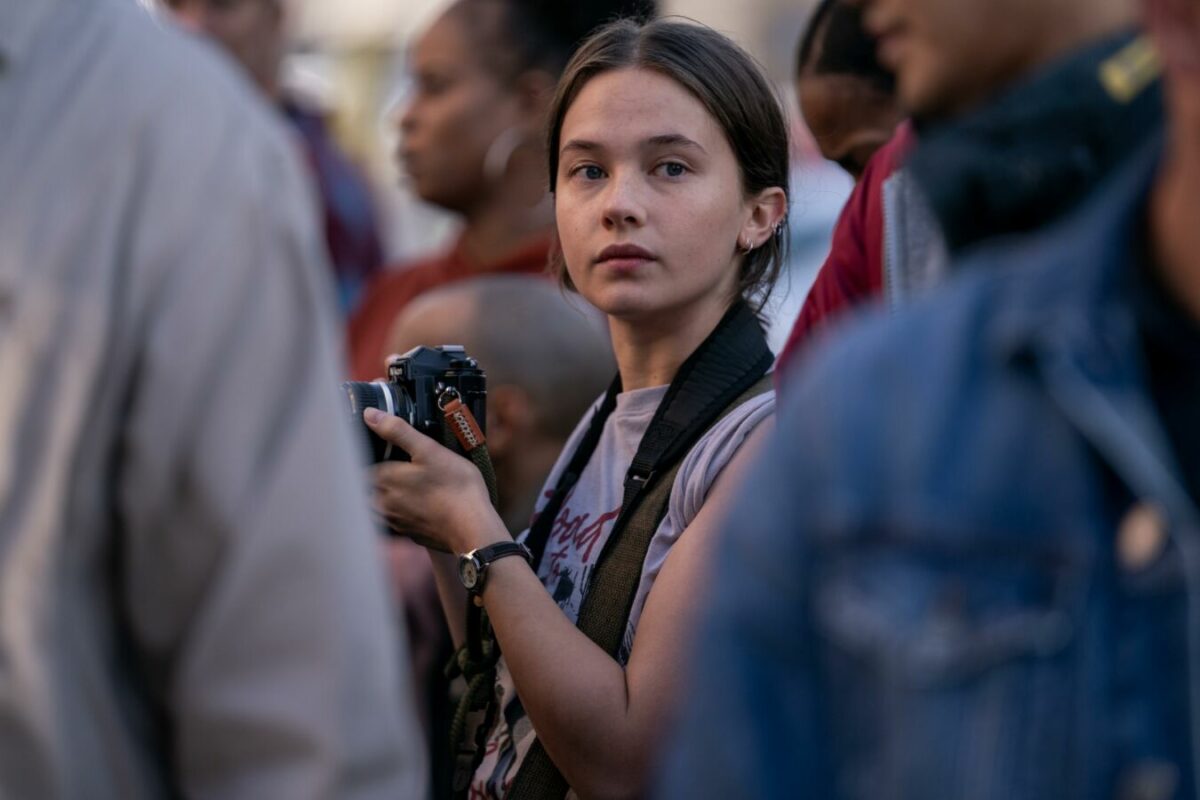
Spaeny’s Jessie, on the other hand, is the idealistic newcomer, often overwhelmed by the brutality around her, as should be. In part, both characters are both sides of what the general population represents – acknowledging the impact and effects of conflicts, but yet so naive as to the nature and consequence of the continuing events.
As the journey progresses, their traits become fluid, as each character experiences moments of vulnerability and resilience but Civil War delves into these dynamics only superficially, hinting at the profound effects of war on journalists without fully exploring the complexities of their experiences. The characters undergo change, yet the film’s commentary on the toll of war reporting remains somewhat underdeveloped.
Civil War’s narrative brilliance shines in the film’s third act, placing the journalists in the heart of a war zone and transforming Civil War into an evocative homage to the resilience and integrity of journalists, particularly those who dare to tread the war-torn frontlines. These scenes hold a raw and powerful energy, a testament to Garland’s strategic perspective choices and his deliberate avoidance of overt political commentary. The events leading to this point fade in significance against the immediacy of survival but it’s also here that the actions of both women falter – the experienced professional establishes that her seasoned facade is a mask she wears because she has been worn out by her experiences in multiple conflicts, whereas the young protégé tries to be like her role-model, without realising that like a photograph, there’s more to a story beyond what you see.
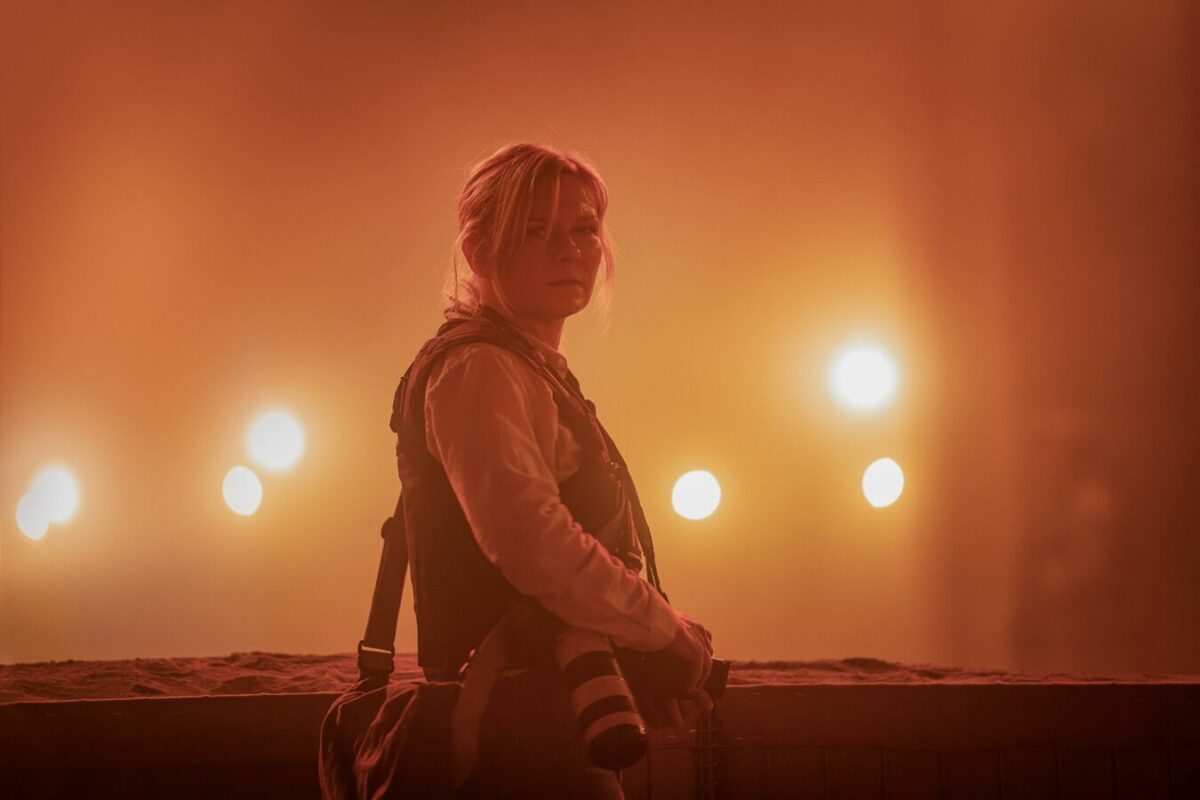
But beyond the faults of both women that lead to their eventual outcome, there’s also some inconsistency with Garland’s depiction of journalism, made obvious by some of the choices that the quartet make which makes them stand out, against a backdrop where they should know better, to blend in with the action and not do anything that stands out, because the very nature of their efforts in recording history depends on their non-interference and non-involvement, but they still do.
Ultimately, the movie isn’t about the four, so some of their actions, while bordering on risky and infantile, has no bearing on the intent of the film, which emerges as critique that potentially reshapes dialogues and provokes a spectrum of reactions across a variety of forums. With an undercurrent reminiscent of Garland’s previous work, Annihilation, this film exceeds the bounds of traditional cinema to confront viewers with a stark reflection of our own troubling realities. Through a meticulous blend of narrative depth and striking visuals, Garland etches indelible images and themes into the fabric of our consciousness, akin to the persistent echo of a war-torn landscape captured in a photograph.
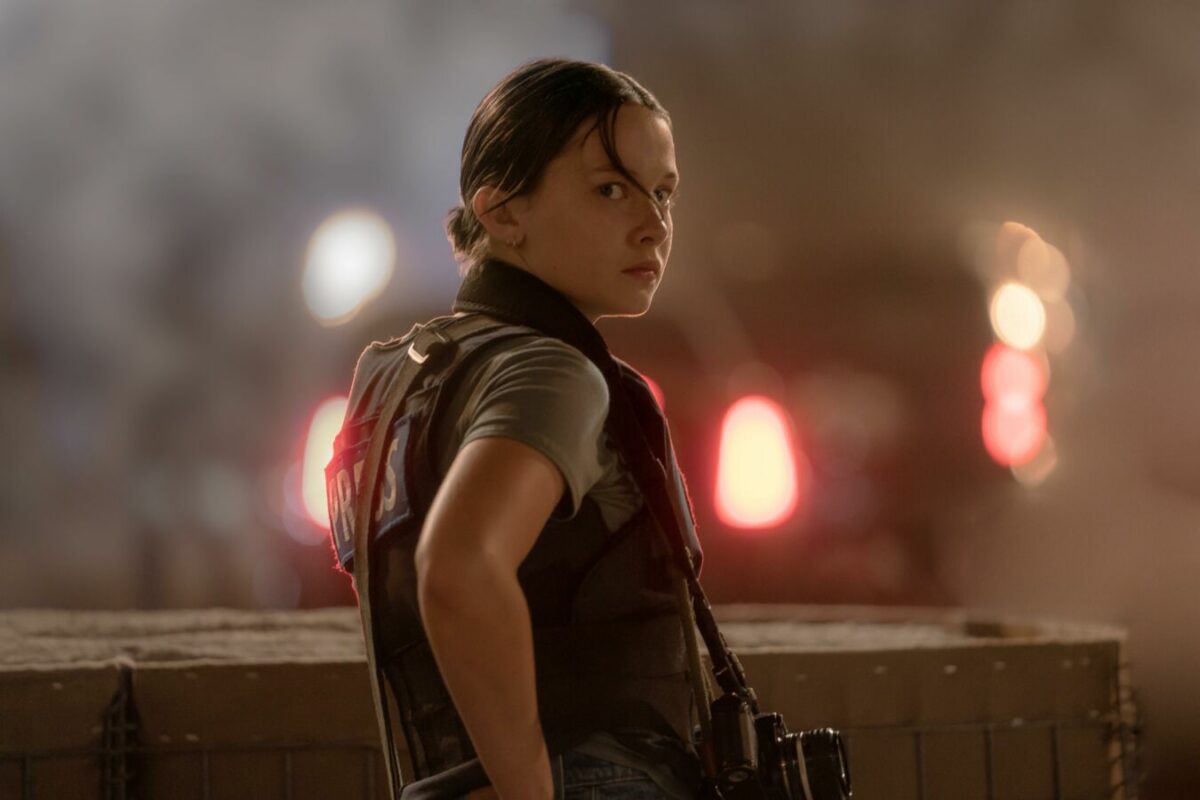
As a noteworthy contribution to modern cinema, Civil War extends an invitation not merely for viewers’ attention but for a deeper, more reflective engagement. It paints a grim portrait of societal fragmentation, serving as a sombre beacon that illuminates the daunting potential futures that lie on our collective horizon. By doing so, it challenges audiences to acknowledge and reckon with the grave implications of our current trajectory.
GEEK REVIEW SCORE
Summary
Alex Garland’s Civil War portrays a divided America through the eyes of war journalists, highlighting the harrowing consequences of political unrest. With a standout performance from Kirsten Dunst, Civil War serves as a stark reminder of the potential consequences of our current trajectory, leaving audiences to grapple with an unsettling vision of the future.
Overall
8/10-
Story - 8/10
8/10
-
Direction - 9/10
9/10
-
Characterisation - 7.5/10
7.5/10
-
Geek Satisfaction - 7.5/10
7.5/10

